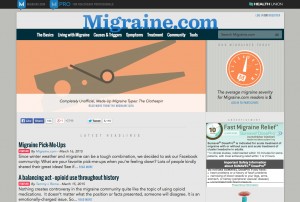Having split my career neatly into two halves – first non-pharma, then pharma – I feel I have a good sense of what best practices can, and should, be lifted from the regular world into pharma marketing. In my experience, attitudinal segmentation by disease area isn’t one of them. In the non-pharma world, a segmentation study can be extremely helpful, and can help you narrow your gaze to a laser focus on the unmet needs of the most valuable target audience.
To clarify, I’m talking about good old-fashioned customized attitudinal segmentation studies. The ones that start with a foundation of qualitative research to uncover the range of attitudes, perceptions, and needs that exist in your category, and then plug those dimensions into a quantitative survey – culminating in a neatly segmented pie of a condition-specific universe. Each of those slices represents a target that is more or less valuable to your brand, based on unique mindset and demographics. These segments go on to inform creative development and help you make sense of future tracking studies and copy testing.
In the non-pharma world, a segmentation study can be extremely helpful, and can help you narrow your gaze to a laser focus on the unmet needs of the most valuable target audience. For example, I imagine that, years ago, Volvo figured out that among the car-buying public, there were people with deep pockets whose greatest concern was keeping their kids safe. They then developed deep equity in owning safety – literally – and in their communications, based on the understanding that this segment was real, and its needs unmet. Similarly, Dove was successful in the consumer packaged goods (CPG) world by segmenting the market and figuring out that an opportunity existed to serve the needs of women who rejected popular notions of beauty.
Why does this custom attitudinal segmentation fall short in pharma? Because there is a profound difference between pharma and non-pharma that reduces the value of segmentation. Primarily, there is a fundamental difference in how consumers enter the category in each world. In the consumer world of goods and services, people choose to be in the buying universe. One chooses to identify as a Volvo person vs. a Subaru person vs. an Audi person. One nominates oneself into that universe. One chooses to buy into Dove’s brand image vs. Chanel.
In pharma, the rules are starkly different; no one chooses to be in the diabetes club, or the psoriasis club. You enter these clubs kicking and screaming, and if you had your way, medicine would not be in your life at all. Yes, if you have a condition that is profoundly impactful, such as arthritis vs. an asymptomatic condition such as high blood pressure, you will enter the club sooner rather than later, but ultimately, regardless of the condition, pharma is the only category where the primary end users want little to do with it (which is why caregivers are such an attractive target… but that’s a whole other article).
So, how do you profile your best opportunity?
The fact remains that to anchor great communications and build a brand, it’s critical to understand what portion of the disease universe represents the best opportunity. The good news is that a different type of segmentation can play a role here; specifically, a segmentation of overall healthcare attitudes (as opposed to a segmentation of patients diagnosed with a particular condition). Everyone has healthcare attitudes, and everyone who consumes healthcare (that is, the entire human population) can be divided into recognizable healthcare attitude segments.
If you work in healthcare marketing, you have seen these segments under various names. There is the Proactive Health Preserver – the person who takes charge of their health, has a strong sense of identity, does not allow themselves to be defined by their condition, and plays a strong role in their own treatment decisions. At the other end of the spectrum, there is the Disengaged and Uninvolved. That nomenclature speaks for itself. And in between, there are another two or three segments that represent people you would recognize at a backyard barbeque.
The reason that general healthcare attitudinal segmentation is more valuable than a condition-specific one is that healthcare attitudes remain fixed across conditions, and often across time. A Proactive Health Preserver (or a Solution Seeker or an Uninvolved) with diabetes represents essentially the same type of opportunity as a Proactive Health Preserver with psoriasis. The condition-specific study does not need to be fielded, because you can predict in advance what the segments will look like and who will be deemed valuable in DTC terms. Spoiler alert: it’s nearly always the Proactive Health Preserver/Solution Seeker (or whatever he/she is called in your study), because they are the ones who are most open to medication and most influential in their treatment decisions.
Further, over time, attitudinal segments tend to remain stable, because they tap into profound perceptions about sense of self and authority that are central to who we are as people. For example, people with a strong internalized identity who are not defined by external circumstances (such as their diabetes) are likely to retain this mindset over the long term. They will see medication as a tool in their arsenal and will not avoid treatment because they don’t want to be “that guy with diabetes.” They will research treatment options and partner in their treatment plans.
Similarly, those who are unable to extricate their identity from their condition are not likely to change this attitude over the long term, and those who leave it all to the doctor are likely to continue doing so over time. This is opposed to other types of segmentation (such as patient-journey based), which, because they are rooted in an external temporal structure rather than an internal mindset, are not truly segmentations. Those segmentations map a patient population as it moves along a disease path. This information may be useful when developing a CRM program, but again, that’s another article.
What can a pharma company (and its agency) do to bring segments to life?
Rather than spend several hundred thousand dollars on segmentation studies that continue to reveal the same segments when the dust clears, a pharma brand team would be better off using existing data to bring their core segments to life. For example, by using the healthcare segmentation already provided by syndicated studies from Kantar Media (MARS) or The Futures Group, and then layering your disease state over that segmentation, we can then profile these augmented segments to determine where your best opportunity lies. The result is a detailed view of attitudes, demographics, and actual media consumption that is actionable. This profile can be cross-referenced with other sources such as qualitative research to flesh out the richness and detail of your target and bring them to life.
What can I do with my de facto segments? The segmentation keys (provided by the vendor) can overlay your de facto segments on to your customer database, so you can create customized messaging for priority segments. You can fold them into your tracking study, so you can track the impact of communications against the patients who are most valuable for your brand. And you can use the segment screening criteria to recruit patients into qualitative research. To learn how to do this, all you have to do is call whatever syndicated vendor makes the most sense for your brand.
So, I still need to do qualitative research? Yes! Leveraging off-the-shelf segmentation with an overlay of disease state does not negate the need for in-depth qualitative research among patients. Understanding how your patients think and feel at every step of the journey – the obstacles and opportunities at key touchpoints – is crucial. The research is also critical to bringing your segments to life in the rich and nuanced way that is necessary to anchor great briefs, and great work.
However, to ensure that your qualitative insights are reflective of your key segments, it’s important to put thought into recruiting these segments for qualitative, which can be done, again, by leveraging the segment tools that can be provided by the vendor. If that’s not possible, the next best approach is to apply a proxy for the segmentation key, ensuring all recruits are proactive about their health and influential in their own treatment decisions – attitudes that, when it comes down to it, are really the key criteria for evaluating the value of one segment versus another.
